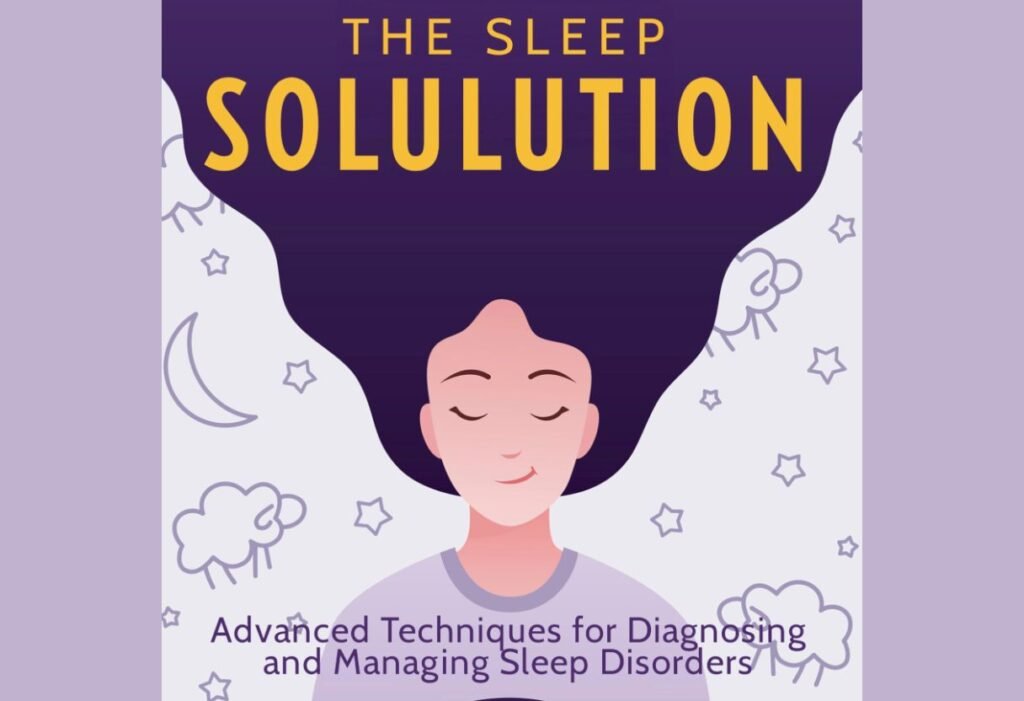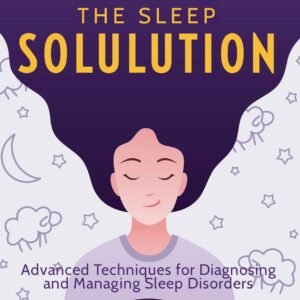The Injectables Industry Just Got a Wake-Up Call from Regulators
Regulators have delivered a decisive blow to the cosmetic injectables industry, introducing sweeping new guidelines that mandate mandatory education and training requirements for healthcare practitioners performing non-surgical procedures. The Australian Health Practitioner Regulation Agency’s comprehensive reforms address dangerous practices where nurses and dentists operated for years without formal additional training before injecting patients with neurotoxins like Botox. They face a September deadline to comply with the stricter rules, which include 12 months of full-time practice requirements for nurses and enhanced advertising restrictions. The regulatory crackdown follows multiple hospitalisations from botulism and cases of permanent, irreversible facial nerve damage and potentially life-threatening strokes linked to inadequately trained practitioners.

New Regulations: A Shift Towards Accountability
The regulatory overhaul represents a fundamental departure from the previous laissez-faire approach that allowed practitioners to enter the cosmetic injectables market without specialised credentials. AHPRA’s new framework dismantles the existing system where nurses and dentists operated for years without any formal additional education or training requirements before administering neurotoxins like Botox to patients. This billion-dollar industry now faces the same rigorous standards that have long governed medical practitioners, creating a unified approach to patient safety across all healthcare professionals.
AHPRA CEO Justin Untersteiner acknowledges the industry disruption these changes will create, predicting that some practitioners will exit the market entirely while others must fundamentally modify their business models and practices to remain compliant. The September deadline provides a clear transition period, after which regulators will actively identify non-compliant practitioners and pursue enforcement action. These measures directly respond to recent incidents involving multiple hospitalisations from botulism caused by non-registered practitioners using off-brand or expired products, and cases where patients required testing for bloodborne viruses due to unsafe injection practices.
Expanded Training Requirements for Practitioners
The new educational mandates extend far beyond basic certification, requiring comprehensive training in anatomy and physiology, patient assessment protocols, and both theoretical and hands-on instruction for specific procedures. Untersteiner emphasises that proper facial anatomy and physiology training cannot be completed in a weekend course, signalling a shift toward substantial educational commitments that mirror medical training standards. Practitioners must demonstrate competency in understanding complex facial structures, recognising contraindications, and managing potential complications before they can legally perform injectable procedures.
Nurses face particularly stringent requirements, with a mandatory 12-month full-time practice period before they can expand their scope to include non-surgical cosmetic procedures. This experience requirement ensures practitioners develop sufficient clinical judgment and technical skills in their primary healthcare roles before transitioning to cosmetic applications. The regulations also mandate that practitioners understand relevant state and federal drug and poison laws, addressing previous gaps where telehealth practitioners issued Botox prescriptions in less than a minute without proper patient evaluation.
Implications for Existing Practitioners
Current practitioners operating in the cosmetic injectables space face immediate pressure to validate their existing skills through formal certification processes or risk losing their ability to practice. Many established nurses and dentists who built successful practices over years of hands-on experience must now retrofit their qualifications to meet the new standards, potentially requiring significant time and financial investment in approved training programs. The regulations create particular challenges for practitioners who have developed expertise through mentorship and practical experience rather than formal educational pathways, forcing them to document and certify skills they may have already mastered.
Business models across the industry require fundamental restructuring, especially for clinics operating on commission-based compensation structures where practitioners earn more for higher procedure volumes or product usage. The new disclosure requirements mean that practitioners must reveal any financial interests that could influence their treatment recommendations, potentially affecting patient trust and the practitioner’s earnings. Additionally, many injectable businesses that relied on telehealth consultations and remote prescribing arrangements face operational disruption, as Queensland guidance has clarified that such practices are illegal unless a nurse practitioner with prescribing rights or an on-site doctor is present.
The enforcement timeline creates urgency for compliance, with regulators conducting active monitoring and compliance checks on clinics to verify the proper possession and storage of Schedule 4 medications, such as Botox and fillers. Practitioners who fail to meet the September deadline will face direct regulatory action, including the potential suspension of their ability to perform cosmetic procedures. In contrast, those who adapt successfully may benefit from increased patient confidence in a more professionally regulated industry.
The Impact of Advertising Reforms on the Industry
The regulatory crackdown extends far beyond practitioner qualifications, targeting the marketing practices that have fueled the industry’s explosive growth. The Therapeutic Goods Administration has sent approximately 100 targeted guidance letters to cosmetic injectable providers following widespread non-compliance with advertising regulations, with more enforcement actions planned in the coming weeks. Last financial year alone, the TGA submitted over 12,000 removal requests to social media platforms for unlawful therapeutic goods advertising, including more than 2,500 advertisements specifically related to cosmetic injectable products.
These advertising reforms represent a fundamental shift in how cosmetic injectable businesses can operate and attract clients. The new AHPRA guidelines mandate that advertisements must include details of the registered practitioner performing the procedures, eliminating the anonymity that many clinic operators have relied upon. Additionally, practitioners must now disclose any financial interests that could influence their advice to patients. However, the disclosure of commission-based payment models will be assessed on a case-by-case basis by regulators.
Changes to Promotional Practices
The entertainment-focused marketing that has dominated social media platforms is set to be eliminated under the new guidelines. Any imagery featuring music, dancing, singing, or comedic comments will be banned from cosmetic injectable advertising, as regulators cite concerns about the trivialization and glamourisation of medical procedures. This prohibition stems directly from the shocking 2020 investigation that revealed doctors dancing while performing liposuction on an unconscious patient, which initially sparked the broader cosmetic surgery industry crackdown.
AHPRA’s new requirements mandate that advertising imagery must focus exclusively on providing information or education, rather than emphasising entertainment value. Testimonials from social media influencers are now completely prohibited, eliminating a significant marketing channel that many clinics have used to reach younger demographics. The guidelines stipulate that all promotional content must portray cosmetic injectables as serious medical procedures rather than lifestyle choices, thereby fundamentally altering how these businesses can position their services in the marketplace.
Restrictions on Targeted Appeals to Vulnerable Populations
The most stringent new restrictions target marketing to minors, with a complete ban on targeted advertising of cosmetic procedures to anyone under 18 years old. This prohibition extends across all platforms and marketing channels, recognising the particular vulnerability of younger consumers to cosmetic procedure advertising. Additionally, the guidelines introduce a mandatory seven-day cooling-off period between the first consultation and any procedures for minors, providing additional protection against impulsive decision-making.
These age-based restrictions acknowledge the growing concern among regulators about the influence of social media marketing on young people’s body image and decision-making processes. The ban on influencer testimonials particularly targets the marketing strategies that have proven most effective at reaching younger demographics, as these endorsements often blur the line between entertainment content and medical advertising. Clinics that have built their client base through Instagram and TikTok marketing campaigns featuring young influencers will need to restructure their promotional strategies completely.
The vulnerability protections extend beyond age considerations to address the broader concern about patients making uninformed decisions based on glamorised portrayals of cosmetic procedures. Regulators have expressed particular alarm about social media content that presents injectable treatments as routine beauty maintenance rather than medical interventions that can result in permanent, irreversible facial nerve damage or potentially life-threatening strokes, as documented in multiple cases reviewed by AHPRA.

Ensuring Patient Safety Amid Controversy
Recent incidents have exposed alarming gaps in practitioner competency across the cosmetic injectables sector. Multiple cases of permanent irreversible facial nerve damage and potentially life-threatening strokes have prompted regulators to take decisive action, according to AHPRA CEO Justin Untersteiner. The NSW Health Care Complaints Commission issued urgent warnings to patients of a Sydney cosmetic clinic to undergo testing for bloodborne viruses after discovering that non-registered staff were injecting patients with dermal fillers and Botox.
These safety breaches have coincided with a troubling trend of patients receiving Botox prescriptions in less than a minute through telehealth consultations, raising serious questions about proper patient assessment protocols. The regulator has documented cases where clinics used off-brand or expired products, leading to multiple hospitalisations after patients developed botulism. Such incidents underscore the urgent need for comprehensive oversight in an industry where practitioners have historically operated without mandatory specialised training in cosmetic procedures.
High-Risk Procedures and the Need for Proper Training
The new AHPRA guidelines require practitioners to complete extensive education encompassing anatomy and physiology, patient assessment protocols, and both theoretical and hands-on training in specific procedures. Untersteiner emphasised that adequate preparation extends far beyond superficial instruction: “That will likely require specific training around facial anatomy or physiology. And I can tell you that is not a weekend course; this is proper training that will be required.” Nurses must now complete 12 months of full-time practice before expanding their scope to include non-surgical cosmetic procedures.
The complexity of injectable procedures demands a sophisticated understanding of facial structures and potential complications. Practitioners must demonstrate competency in assessing patient suitability, understanding contraindications, and managing adverse reactions. The guidelines specifically address the reality that these procedures carry significant risks when performed by inadequately trained individuals, particularly given the proximity to critical facial nerves and blood vessels that can result in permanent disfigurement or life-threatening complications.
Legal Implications of Non-Compliance
Practitioners who fail to meet the new standards face serious regulatory consequences as enforcement agencies ramp up compliance monitoring. State pharmaceutical and poisons regulators in NSW and Queensland have begun conducting systematic compliance checks on clinics, specifically monitoring the possession and storage of Schedule 4 medications, such as Botox and fillers. AHPRA has made clear that after the September deadline, they “will be identifying those that are doing the wrong thing and we will take action where we need to.”
The legal framework now holds practitioners accountable across multiple jurisdictions, with telehealth prescribers remaining responsible for patient outcomes regardless of who performs the actual procedure. This expanded liability means that doctors who remotely prescribe injectables cannot distance themselves from complications arising from inadequately supervised treatments. The Therapeutic Goods Administration has already issued over 100 targeted guidance letters to non-compliant providers, with more enforcement actions planned in the coming weeks.
Beyond immediate regulatory penalties, practitioners face potential civil liability and professional misconduct charges that could result in suspension or permanent loss of registration. The legal implications extend to clinic owners and operators who may be held responsible for allowing unregistered staff to perform procedures or failing to maintain proper drug storage protocols, creating a cascade of liability that affects entire business operations rather than just individual practitioners.
Navigating the Compliance Landscape: What Practitioners Must Know
The regulatory overhaul has created a complex web of obligations that practitioners can no longer navigate through informal understanding or industry assumptions. AHPRA’s new guidelines mandate that all registered health practitioners must demonstrate sufficient education, training, and competence before performing any cosmetic procedure, effectively ending the era where nurses and dentists could enter the injectable market without formal qualifications. This shift aligns injectable practitioners with the same standards already required for doctors, creating uniform accountability across all healthcare professionals in the cosmetic space.
Practitioners now face heightened scrutiny over their business models, particularly those operating on commission-based structures where compensation increases with procedure volume or product usage. The regulator has made clear that financial interests that could influence treatment recommendations must be disclosed to patients. However, the specific requirements will be assessed on a case-by-case basis. Additionally, the mandatory provision of written information to patients—including prescriber details, product specifications, aftercare instructions, and care coordination responsibilities—transforms every consultation into a documented process that regulators can review during compliance audits.
Responsibilities in Prescribing and Administering Injectables
The separation between prescribing and administering injectables has become a focal point of regulatory enforcement, particularly targeting the widespread practice of remote telehealth prescriptions. AHPRA has expressed concern about telehealth practitioners failing to meet professional obligations, with media reports revealing botox prescriptions issued in less than a minute. The new guidance reinforces that prescribing practitioners remain responsible for patient outcomes regardless of whether they perform the injection, creating ongoing liability that extends beyond the initial consultation.
Practitioners must now demonstrate a comprehensive understanding of both state and federal drug and poison laws, as Schedule 4 medications like Botox and dermal fillers require strict possession and storage compliance. The regulator has documented multiple cases of permanent, irreversible facial nerve damage and potentially life-threatening strokes from cosmetic injectables, emphasising that these procedures carry genuine medical risks that demand appropriate clinical oversight. This responsibility extends to ensuring proper patient assessment, obtaining informed consent, and maintaining continuity of care throughout the treatment process.
State-Specific Guidelines and Regulatory Enforcement
Queensland’s regulatory guidance has effectively dismantled many existing business models by clarifying that nurses cannot legally hold prescription injectable supplies on-site or arrange remote doctor consultations unless they are nurse practitioners with prescribing rights or have a doctor physically present. This interpretation has thrown numerous clinics into operational chaos, as many injectable businesses nationwide operate under the model of nurse-administered treatments with off-site medical supervision. State pharmaceutical and poisons regulators in both NSW and Queensland have intensified compliance checks, conducting unannounced inspections to monitor the possession and storage of controlled substances.
The enforcement landscape varies significantly between jurisdictions, creating additional complexity for practitioners operating across state boundaries or considering business expansion. AHPRA CEO Justin Untersteiner has warned that non-compliant practitioners will face direct regulatory action after the September deadline, with the agency actively identifying and pursuing enforcement measures against those who fail to comply. The NSW Health Care Complaints Commission’s recent warning about bloodborne virus testing at a Sydney clinic demonstrates how quickly regulatory violations can escalate into public health emergencies, underscoring the serious consequences of non-compliance.
Practitioners must also navigate the intersection of state health regulations with federal advertising restrictions, as the Therapeutic Goods Administration has issued over 100 targeted guidance letters to injectable providers and submitted more than 2,500 removal requests for cosmetic injectable advertisements on social media platforms in the past financial year alone. This multi-layered regulatory environment requires practitioners to maintain compliance across health professional standards, pharmaceutical regulations, and advertising restrictions simultaneously, with violations in any area potentially triggering broader regulatory scrutiny of their entire practice.
The Future of Cosmetic Injectables: Market Dynamics and Ethical Considerations
AHPRA CEO Justin Untersteiner’s prediction that practitioners will need to “modify their business models and modify their practices” signals a fundamental shift in how the cosmetic injectables industry operates. The regulatory crackdown extends beyond simple compliance checks—state pharmaceutical and poisons regulators in NSW and Queensland have been conducting systematic compliance audits on clinics, monitoring the possession and storage of Schedule 4 medications, such as Botox and fillers. This enforcement approach suggests regulators are moving toward a pharmaceutical-grade oversight model rather than treating cosmetic injectables as routine beauty services.
The industry’s billion-dollar valuation now faces pressure from multiple regulatory fronts, with over 2,500 advertisements relating to cosmetic injectable products flagged for removal by the TGA in the last financial year alone. Practitioners who have operated for years without formal additional education or training must now navigate mandatory 12-month experience requirements for nurses and comprehensive training in facial anatomy and physiology. The regulatory framework crucially forces a professionalisation of what has been a largely unregulated market, potentially reducing the number of providers while increasing operational costs across the sector.
Financial Models and the Influence on Patient Care
Commission-based payment structures have created inherent conflicts of interest within cosmetic injectable clinics, where practitioners earn more money based on the volume of product injected rather than patient outcomes. The new AHPRA regulations require practitioners to disclose financial interests that could influence their advice, though the agency leaves disclosure decisions to clinicians’ judgment on a “case-by-case basis.” This approach may prove insufficient given that many nurses and doctors working in cosmetic injectable clinics operate under these commission models, creating direct financial incentives to recommend more procedures or larger quantities of injectables.
The widespread practice of telehealth consultations, where patients were sometimes being issued Botox scripts in less than a minute, exemplifies how profit-driven models can compromise patient safety. Many injectable businesses operate by having nurses perform procedures while doctors remotely prescribe products through brief telehealth consultations, a practice that Queensland regulators have now deemed illegal unless specific qualifications are met. The regulatory response suggests authorities recognise that current financial incentives may be fundamentally incompatible with appropriate patient care standards.
The Role of Public Perception and Industry Trust
Recent cases involving non-registered practitioners using off-brand or out-of-date dermal fillers and Botox have led to multiple hospitalisations and botulism cases, severely damaging public confidence in the industry. The NSW Health Care Complaints Commission’s warning to patients at a Sydney cosmetic clinic to be tested for bloodborne viruses after finding evidence of non-registered staff performing injections represents the type of scandal that can permanently alter consumer behaviour. These incidents have provided regulators with compelling justification for their crackdown, as they can point to concrete cases of patient harm rather than theoretical risks.
The ban on social media influencer testimonials and targeted advertising to minors reflects regulatory concern about how the industry has marketed itself to vulnerable populations. AHPRA’s specific prohibition on entertainment elements like “music, dancing, singing, or comedic comments” in advertising stems from documented cases of practitioners trivialising serious medical procedures, including the notorious video of doctors dancing while performing liposuction on an unconscious patient. The agency’s focus on preventing “trivialization and glamourisation” of cosmetic procedures suggests regulators view the industry’s marketing practices as fundamentally misleading about the medical nature and risks of these treatments.
The regulatory emphasis on mandatory written information disclosure—including details of prescribing practitioners, performing practitioners, products used, and aftercare requirements—indicates authorities believe patients have been making decisions without adequate information about risks and responsibilities. This documentation requirement transforms what many clinics treated as simple beauty appointments into formal medical procedures with transparent chains of accountability, potentially shifting public perception from cosmetic enhancement to medical treatment with corresponding expectations for professional standards and outcomes.
Key Takeaways:
- AHPRA has introduced mandatory education and training requirements for nurses and dentists performing cosmetic injectables, ending years of practitioners operating without formal additional qualifications in the billion-dollar industry
- New advertising restrictions ban social media influencer testimonials, targeted ads to minors, and entertainment-focused content, such as dancing or music, while requiring practitioners’ details to be disclosed in all advertisements.
- Nurses must complete 12 months of full-time practice before performing cosmetic procedures, starting in September. The training requirements include anatomy, physiology, and hands-on procedure education that extends beyond weekend courses.
- Practitioners must disclose any financial interests that could influence their advice, addressing concerns about commission-based models where providers earn more money based on the volume of procedures or products they use.
- The regulatory crackdown follows multiple hospitalisations from botulism and bloodborne virus exposure at clinics using unregistered staff, off-brand products, and inadequate safety protocols.
Conclusion
So the regulatory landscape for Australia’s cosmetic injectables industry has fundamentally shifted, with AHPRA’s comprehensive new guidelines serving as a decisive wake-up call for practitioners who have operated with minimal oversight for years. The sweeping changes—from mandatory training requirements and experience thresholds to advertising restrictions and enhanced patient safety protocols—signal that regulators are no longer willing to tolerate an industry where profits have often superseded patient welfare. Parliament takes on the aesthetics industry! The push for stricter regulation reflects growing public concern over safety standards in cosmetic procedures.
Practitioners now face a clear choice: adapt their business models to meet these rigorous new standards or exit the industry altogether. The September deadline provides clinics with limited time to ensure compliance, and AHPRA has made it clear that they will actively pursue enforcement action against those who fail to meet the requirements. While some industry players may view these regulations as overly restrictive, the documented cases of permanent facial nerve damage, strokes, and botulism infections demonstrate why such measures have become necessary. The alignment of nursing and dental practitioner requirements with existing medical standards represents a long-overdue professionalisation of an industry that has grown rapidly without adequate regulatory oversight.
FAQ
Q: What are the new requirements for nurses and dentists performing cosmetic injectable procedures?
A: AHPRA has introduced new guidelines requiring nurses and dentists to complete formal education and training before performing cosmetic injectable procedures like Botox and fillers. Nurses must complete 12 months of full-time practice before expanding their scope to include non-surgical cosmetic procedures. The training must consist of education in anatomy and physiology, patient assessment skills, and both theoretical and hands-on training in specific methods. These requirements come into effect in September and align with existing standards for doctors.
Q: How will advertising rules change for cosmetic injectable businesses?
A: The new guidelines introduce significant advertising restrictions. Advertisements must include details of the registered practitioner performing procedures, and testimonials from social media influencers are banned. There’s a complete prohibition on targeted advertising of cosmetic procedures to minors. Additionally, advertising imagery must focus on information or education rather than entertainment – features like music, dancing, singing, or comedic comments are not permitted. These changes aim to prevent the trivialization and glamourisation of cosmetic procedures.
Q: What enforcement actions are regulators taking against non-compliant clinics?
A: Regulators are conducting comprehensive compliance checks across the country. State pharmaceutical and poison regulators in NSW and Queensland are monitoring the possession and storage of Schedule 4 medications, such as Botox and fillers. The TGA has sent approximately 100 targeted guidance letters to providers following the identification of non-compliance, with more letters planned. Last financial year, the TGA submitted over 12,000 requests for removal to social media platforms, including more than 2,500 advertisements related to cosmetic injectable products.
Q: What are the new patient safety and information requirements?
A: Under the new guidelines, practitioners must provide written information to patients, including details of who prescribed the cosmetic injectable, who performed the procedure, specifics about products used, aftercare instructions, and who coordinates ongoing care. For patients under 18, there’s a mandatory seven-day cooling-off period between the first consultation and any procedures. Practitioners must also disclose any financial interests that could influence their advice, including commission-based payment models where applicable.
Q: Why are these regulatory changes being implemented now?
A: The changes respond to serious safety concerns in the industry. There have been multiple cases of permanent, irreversible facial nerve damage and potentially life-threatening strokes from cosmetic injectables. Recent incidents include non-registered practitioners using off-brand or out-of-date products, leading to hospitalisations from botulism. The NSW Health Care Complaints Commission warned patients at one Sydney clinic to be tested for bloodborne viruses after finding evidence of non-registered staff performing injections. These regulations aim to protect patients from providers prioritising profits over safety.



 Login
Login







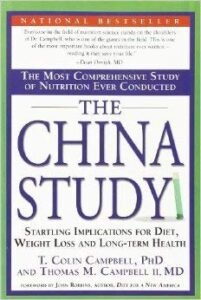
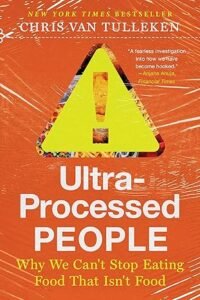


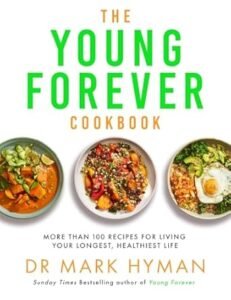 .
.







